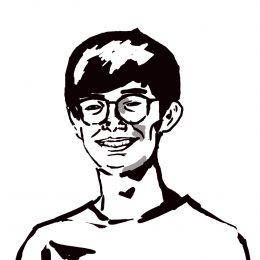
Being a creative at Binghamton University can be frustrating. Teachers and departments are most of the time not sufficient, and critique can sometimes be impotent, if not derogative to your original vision altogether. To clarify, I am talking specifically about my experiences in the design department, so this particular assessment is not necessarily constituent of the entire department of art and design. This is also not to say that there aren’t some great professors in the department, certainly not. But if I may say so, I believe that many other art students also feel this way about their major to some degree.
Admittedly, it was at the request (order, more like) of a particularly good professor to apply for an internship here at Pipe Dream, which began my career here. And I think that, within the span of the past two years, I’ve been able to mold this paper into the clean — and at times, superbly designed — piece of editorial layout you hold in your hands now. And if there was one major takeaway, one piece of advice that I advertise consistently to others who feel a bit stifled in their creative endeavors, it would be to trust yourself the most.
Especially in design, but perhaps to a greater degree in other artistic ventures, there are a million different ways to go about the millions of creative decisions you have to make while working on something. But regardless of what others might suggest to you, or what you think someone more “skilled” would do in your position, it’s essential to remember that YOU are the one in that position. And no matter what you use as reference, or what suggestions you do take, what you create is entirely something only you could make.
When I started at Pipe Dream, this concept was daunting to me. Experimentation seemed dire, since ultimately it was other people’s work that I was playing around with. But decisions wouldn’t get made, and as a result, deadlines got pushed. It wasn’t until I began to look at other college publications to see what they were doing, that I realized the importance of “grabbing” the content a little. Within reason, I allowed myself to do what I wanted to with the raw materials of copy and photography, and create things that were not simply student ventures into typography. Now that I knew where I needed to go with the paper, all it took was the experimentation and time necessary to raise its level to that of other universities’.
I was empowered by the understanding of where I stood in the scheme of newspaper design, and good university paper design at that. I took what I resonated with, and created something that I was happy with creating. And I believe this is the missing link of the art curriculum I’ve experienced so far and (though it may be a bit obvious) is good advice for anyone who wants more from their work. It is essential to any creative process to seek out and cling tightly to the niche you cut for yourself in your field. If you are a designer enrolled here now, and you are reading this, please do yourself a favor and follow AIGA Eye on Design, Fonts In Use, Typewolf or wade through any of the plethora of work from professional studios available to view on Behance.
You also owe it to yourself to surround yourself with people who will work with you and allow you to grow. Allow me to use this as an opportunity to make my shoutouts to people like Khaled, who taught me not only about different fields about design and web coding, but also to trust my intuition the most. And to Emily and Bridget, who were nice enough to take my word for it. And for being nice in general. Many of my best designs owe a lot to the content mama herself, Sasha Hupka. Design-minded content creators are a designer’s best friend. Lastly, my mom and dad, and my siblings Carolyn and Conrad, who are my mental bulwark and constant comedic support. And remind me I’m not the only crazy one out there.
Overall, you have to do your own thing. This may seem obvious to some of you, but to anyone who feels discouraged or lost, your gut reaction is valid. An artist-designer picks up their paintbrush or pencil, a photographer-designer grabs their camera. I happen to respect simple vector design and typography, and once I connected with the people who did that, I learned about what could make it effective, and of course, sexy (good-looking). Above all, remember that your creative vision is paramount. While suggestions are essential to creating a visually suitable work, you can’t lose sight of your vision; it’s the only one you’ve got. Why not nail it?
Cory Bremer is a senior majoring in art and design. He has been been the design manager since fall 2017.


